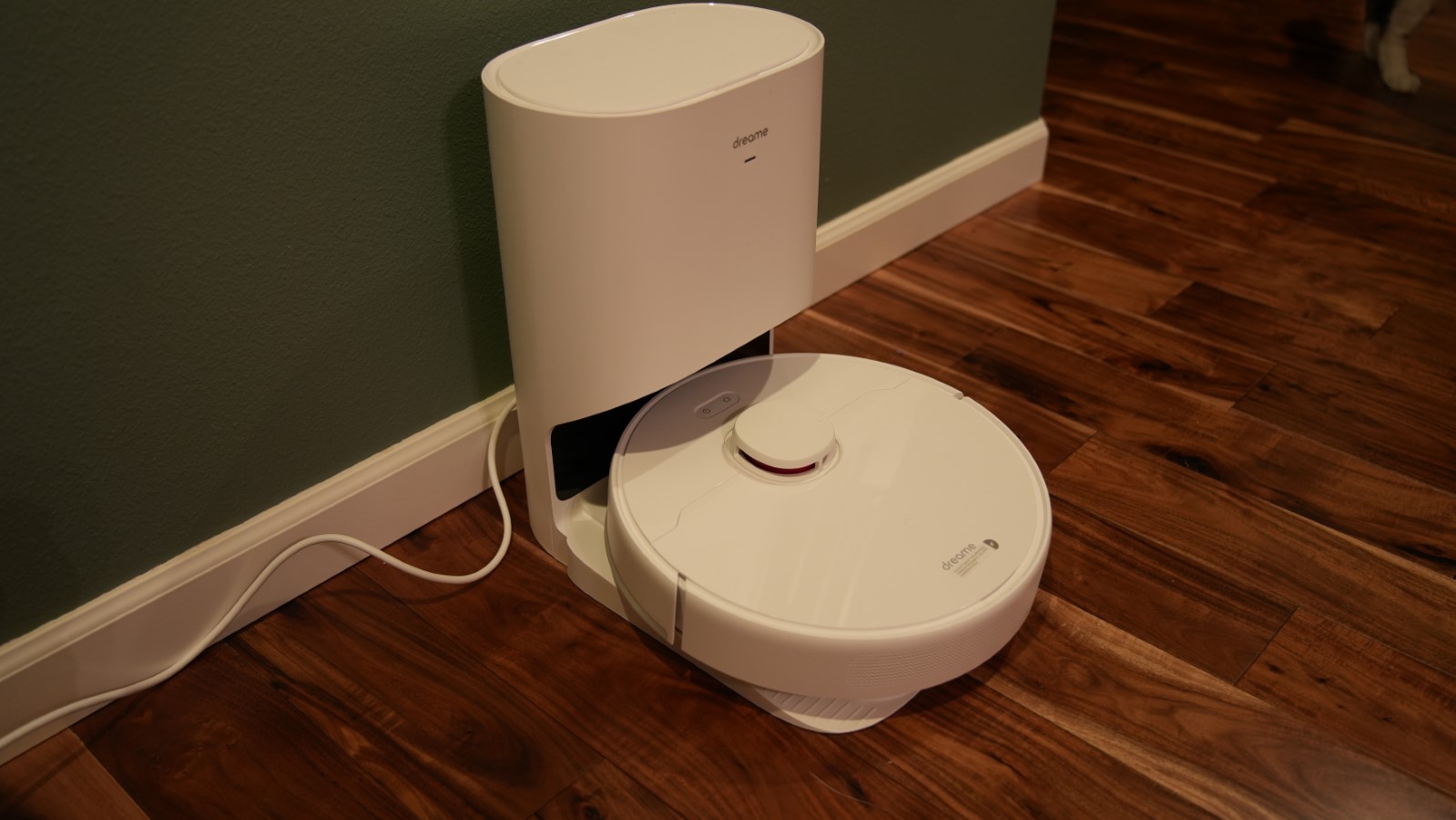Back in 2018, I tested out a Roborock S5 and found it to be an incredible robot vacuum. After firing up the Mi Home app required to control this new DreameBot D10 Plus, it was nice to see that the Roborock S5 and S6 were still saved in my profile. It’s interesting to see that the Dreametech robots are now a part of the Xiaomi organization, which means much of what I loved about the S5 is found in the D10 Plus.
Hardware and box contents
The box that the vacuum and self-emptying base ships in is quite large since the base has a capacity for storing up to 45 days of vacuumed dust. An extra dust collection bag for the self-emptying base is included, along with a mop pad, water tank, and cleaning tool. The cleaning tool is the same as the one we saw on the Roborock S5 and S6, with a cutting edge and brush edge to remove hair and debris from the main and side brushes. Also: I just spent a week with a robot cat and my life will never be the same The DreameBot D10 Plus shares similar external features are the Roborocks, too, with a raised laser distance sensor (LDS), round form factor, and single side brush. A similar dust bin design is found under the front lid. The round button assembly has two LED buttons for power and home. Both are equally accessible with the lid open or closed. On the bottom, we have two large main wheels with silicone tire treads that are sure not to scuff up your hardwood or tile floors. There is a main brush, a side brush, and an omnidirectional wheel. The charging contacts are also located on the bottom. More: Roborock S7 MaxV Ultra review: Most trustworthy robot vacuum and mop ever The newest feature of the DreameBot D10 Plus is the self-emptying base. After every cleaning session, the vacuum will automatically return to the base, where the charging connectors meet up to charge the vacuum. At your specified interval, or at the end of each vacuum session, the base sucks the dirt bin clean. This is effectively achieved by a dual-channel suction mechanism; the dust and debris from one side of the vacuum are sucked in, while the other side pushes fresh air into the bin. All the dust eventually makes its way into the 2.5L emptying base. This is a much cleaner and more sanitary process than manually dumping the dustbin and having dust fly all over the place. The LiDAR sensor on top of the vacuum can quickly and accurately map your entire floor plan, so the robot knows where to clean and what objects to avoid. Multiple levels of suction can be enabled, too, so you can flip between having a quiet cleaning experience and one that’s louder but more effective. Still, even on the higher level of suction, I found the vacuum to have a reasonable volume level. Also: Car vacuums make it easy to deep-clean your ride, but which is the best?
Smartphone software
The Mi Home app is used to manage the vacuum and it is also used for many other types of mobile tech, including electric scooters, doorbells, lamps, home sensors, and air treatment systems. For the DreameBot D10 Plus, the app presents a series of specific controls for the vacuum, including the aforementioned suction modes. The home page shows you your cleaning area, the typical runtime for that area, and the battery charging status. To initiate a session you can simply tap the play button, sit back, and watch the little robot go to work. There’s an option to choose what part of your home you’d like the robot to clean, too, ranging from a single room to everything to a specific zone. Also: How I made my home smart on a budget (and how you can, too)
Mopping with the DreameBot
For the ultimate cleaning experience, I’d recommend attaching the included water tank and cleaning mop accessory to the DreameBot vacuum. The 150mL water tank is easy to use, and the three water volume levels via the app let you control how damp you want the mop pad to be when brushing through your floors. Our hardwood floors look fantastic after a dust-to-mop cycle. Unlike some more expensive vacuums, the water tank on the robot must be filled and cleaned manually. As for the auto-emptying system, the cadence can be set to every one, two, or three times the robot vacuums. In general, the vacuum’s battery is rated for 150 minutes of runtime, which should cover a large house or office space. If the vacuum does need to recharge, it will return to the charging base, top up, and pick up right where it left off. Also: Best robot vacuum: Roomba isn’t your only option
Bottom line
I continue to be amazed by the reliability and effectiveness of the DreameBot D10 Plus. The amount of pet hair and dust that the robot is capable of picking up is extraordinary and the self-emptying feature is one that I can no longer do without.
Alternatives to consider
Besides the DreameBot D10 Plus, here are some worthy robot vacuum alternatives:
